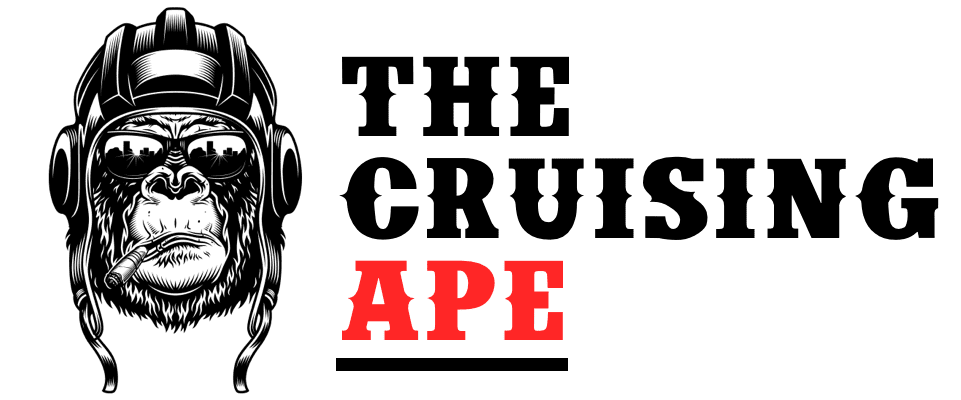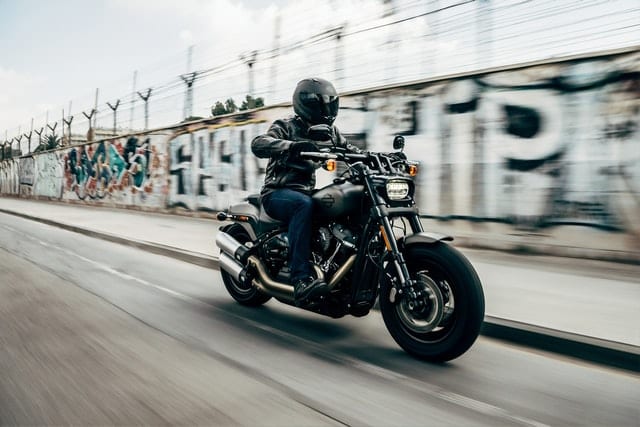If you want to be an advanced rider, then downshifting is the next thing to learn. I bet you’ve heard how downshifting allows you to not lose speed during cornering or how it can be used for engine braking and save your brake pads.
But is downshifting bad for the motorcycle? Surely, you have experienced the jerk reaction when you downshift on your motorcycle – what happened there?
Downshifting is actually not bad if done correctly – just make sure to perform rev matching as you downshift.
This makes sure your motorcycle clutch disc and pressure plates are in sync – preventing the motorcycle to jerk and also wear and tear damages.
If you don’t fully understand the above statement, that’s fine – I don’t expect you to. In this article I will dive deep into downshifting and clear out all the common misconceptions people have.
For now, let’s talk more about why downshifting will not damage your engine. I figured you will be more interested to know more once you understand that your engine will be fine.
Downshifting Will Not Damage Engine If Done Right
To understand correct downshifting, your first need to understand how gear works in a motorcycle (or in any vehicle really).
Lower gears like second gear provide more torque (power) but lower top speed. Whereas high gears like third gear are the opposite – lower torque but higher top speed.
This means it’s possible for a motorcycle to be travelling 30mph in both second gear and third gear – they just operate at a different RPM.
For example, 30mph at second gear may put you at about 4000 RPM whereas 30mph at third gear is operating at say 1500 RPM.
The key to downshifting correctly is to make sure your RPM when you downshift is suitable for the lower gear (AKA Rev Matching). In short, crank up your RPM into a higher position right before you downshift.
If the RPM is correct, the lower gear will have no problem taking over and your bike won’t jerk. This means smooth transition and no unnecessary pressure and damages to your transmissions or engine.
For example, if you are at 30mph on third gear and want to downshift to second, make sure you have 4000 RPM before you downshift to second gear.
Do this correctly every time and your transmissions will be fine. However, do this wrong and your transmission system will wear off pretty quickly.
Now that you know downshifting is not bad if done correctly, I want to discuss more on the definition of downshifting. Downshifting is often confused with engine braking – which is an entirely different thing.
If you know this already, skip ahead. Otherwise, It’s important that you understand!
What Is Downshifting On a Motorcycle? (And Why)
Downshifting on a motorcycle is when you shift into lower gears – usually done during cornering to make sure you have maximum power available to accelerate again.
Downshifting is most popular during a race or for advanced riders to lose as little speed as possible during cornering.
Downshifting if often mistaken for engine braking. When done incorrectly, downshifting can make your bike jerk and be forced to lose speed. This is dangerous and can wear out your bike transmission real quick.
I will talk about the difference between downshifting and engine braking right after this. But do understand that downshifting is done to preserve speed during cornering and not to slow down your bike.
Downshifting Vs. Engine Braking Vs. Rev Matching
When it comes around downshifting, there are a lot of jargons thrown around: downshifting, engine braking rev matching, etc.
If you are a beginner this is overwhelming and you ended up confused. But fret not, here are the differences between each of them.
Downshifting is when you drop into lower gears to maximize acceleration power after your corner. As I said, lower gears have more power but lesser top speed. When you corner, you will most likely brake and lose speed.
To make sure you gain back all that lost speed during cornering, you want to downshift into lower gears, get the monster acceleration and shift up again as you pick up speed.
Engine braking is when you let go of the throttle to naturally slow down your motorcycle. This is usually a more efficient way to slow down without shaving off your brake pads.
Engine braking is usually mistaken with downshifting because downshifting can also cause an engine brake. Although the engine brake from downshifting is usually unnatural and destructive.
Rev matching is when you crank up your RPM into a higher position – in preparation to downshift. Rev matching makes sure your RPM is high enough for the lower gear to take over the speed. Thus, preventing any jerking or unnatural locking of the engine.
To have a smooth and non-destructive downshift, you need to make sure the rev matching is correct.
Here’s a great technical video about downshifting and rev matching from YouTube. Watch this short video and you should understand what happens internally.
Pros & Cons Of Downshifting a Motorcycle (Compared To Regular Braking)
As I said above, downshifting is not meant to slow down your bike but instead provides you with extra acceleration power right after your corner. When done right, the whole process is smooth and you won’t be pressuring anything.
Which means, the pros for downshifting is clear – you are equipped with enough power to quickly accelerate again right after you corner. And the con? Well, nothing (if you do it right).
That being said, many people still think that downshifting is used for braking and are still curious about the pros and cons. If this is you, please re-read my explanations above!
So without further talks, here are the pros and cons between downshifting and regular braking. (It’s mostly about putting pressure on the brake pads or clutch.)
Pros of downshifting vs. regular braking
- Saves brake pads. The braking pressure is now left to the engine and transmission. Your brake pads won’t do any work. Thus, saving them. You won’t be replacing your brake pads for a while if you regularly downshift to slow down.
- Still in gear. Downshifting to slow down means you will be in gear at all times. This could potentially be a life saver should you need to accelerate during emergencies. This applies more to riders who put their bikes on neutral while braking.
- Great for downhill. Constantly using brakes when going downhill can overheat and wear out brake pads very quickly. Downshifting into a lower gear and use that to hold a slow speed is a much better approach.
Cons of downshifting vs. regular braking
- Damages on clutch. When downshifting to slow down, you are essentially switching the braking work from the brakes to your clutch. The clutch is not designed for this and will take unnecessary pressure – causing wear and tear damages or potentially total failure.
- Much harder to fix or replace clutch. Repairing or replacing a clutch is harder and more expensive than replacing brake pads. Expect to have more clutch issues if you regularly downshift to slow down.
- Problems remain undetected. Damages on the clutch can often remain undetected. Clutch is not the same as brake pad – where they are expected to be replaced regularly. You risk the clutch to totally fail while out riding.
Final Thoughts
Downshifting is not meant to slow down a vehicle – brakes are designed to do that (not the clutch). The only time downshifting to slow down is acceptable is when riding downhill from a hill or mountains.
Downshifting on the street will unnecessarily wear out your clutch that could be expensive to fix.
I hope you get some value out of this article. Especially the differences between downshifting, engine braking and rev matching.
I know they can be overwhelming and be confused with one another! (At least that’s what happened to me).

